After my successful travel around Peru and Bolivia, I decided to go back to Latin America again, but this time to Chile. I had some specific ideas in mind, but there was nothing fixed when I started looking for company for the journey. I can travel alone, but every now and then I like to travel with somebody else as well, provided I organize the trip and guide it. In other words, provided I have it my way. (My friend with whom I travel most often will love this open and candid admission when she reads this.)
And so I started talking with my friends with an open tender “Who wants to go to Chile with me?,” but I eventually had only one person interested. As there was no competition, I accepted that she went with me, but I told her that it would be advisable to get together for a coffee and discuss in peace about what we were interested in.
– This is your time and your money, and regardless of what I think, it would be good if you could see what you may be interested in and whether it suits you what I have envisaged, I would tell her.
– No, she would say, I just want to go somewhere on a holiday.
We had this attempt of a conversation several times. I tried to catch her, but she would keep slipping out of my reach. In her defence, she really works a lot and on the other hand I’m really great at organizing travels, so it was logical that she had faith in me.
Still, as it turned out, the fact that Sneza (because that’s her – my friend whom I have already mentioned when I wrote about Cyprus) decided to go to Chile with me was of essential importance for the successful outcome of the journey. Not only that we got on very well, but also she had a good friend whom she had met through work who lived with her brother and her sister-in-law in Santiago, the capital of Chile. Moreover, Saska, Dragi and Mare accepted Sneza and me as a whole package and offered us hospitality during the entire time we were in Santiago, as well as a base where we could leave our excess luggage while we travelled around the country. Sneza stayed in Chile for 3 and a half weeks, and I for full 6 weeks.
I will not even try to come up with words that could help me express my enormous gratitude for such wholehearted hospitality. However, even more than that hospitality and free lodging, it was important to me that I met and became friends with such great and wonderfully good people as Saska, Mare and Dragi are. I feel immense thankfulness for having the pleasure and huge honour to meet such fantastic people as the three of them. I am only sorry that we live so far away from each other and we cannot meet more often. Even if it meant that I crash at their place for another several weeks.
Chile is a huge country, primarily in terms of length and width. As for the length, the distance from the north to the south is around 4300 km, which is a couple of hundred kilometres longer than the distance from Lisbon to Moscow, which means that Chile is as long as Europe is wide. The width of the continental part of Chile goes to around 200 km. On the other hand, when I refer to “huge width” I think of the Easter Island that belongs to Chile and that is located around 3700 km west of the mainland.
So, bearing in mind this specificity of Chile, Sneza and I agreed to use airplanes for the most part. I don’t know whether at the time there were as many low-cost companies as today, but some ten years ago it was possible to get significant discounts for the local travel if flying into the country by the national carrier and that is LAN. For us, this was quite risky, as we could not make a good connection from Belgrade, so we decided to buy two separate tickets each with a break in Madrid. In order to be sure that we would have enough time to transfer from one terminal to the other with all of our things, we selected flights that allowed us several hours in Madrid. On the way to Santiago, this meant that we had enough time to go for a short walk around the centre of Madrid and to have a dinner, too.
We flew to Santiago overnight and quite unexpectedly I even managed even to sleep for a while, so it was easier for me to go through the day ahead of me. When we finally finished with the passport control and customs, there was an elderly gentleman waiting for us with his big and comfortable taxi which was organized for us by our hosts in order to get to them with less hassle.
Looking at the infrastructure and where we passed going from the airport to the place we were to call our home in the next several weeks, it was clear to me that we came to a very well developed country. That impression kept solidifying itself over the next period. Saska and her family lived in a very nice part of the city. There were new, big and modern residential and business buildings, and everything was perfectly clean, well arranged and maintained.
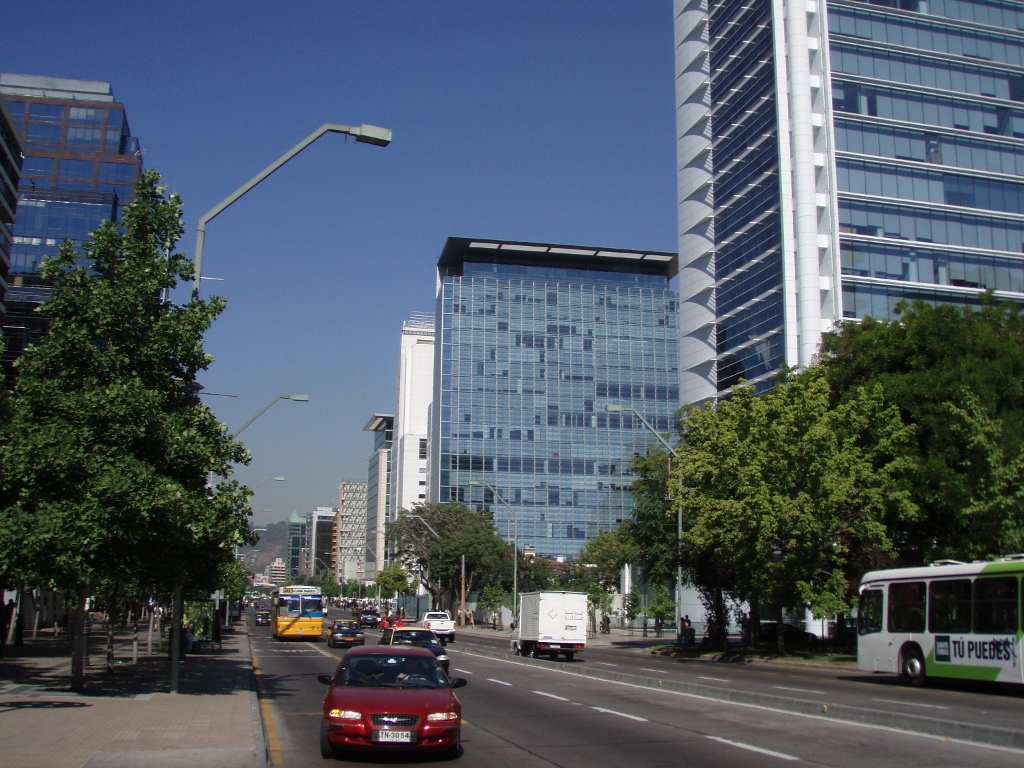 One of the main streets in the modern part of Santiago
One of the main streets in the modern part of Santiago
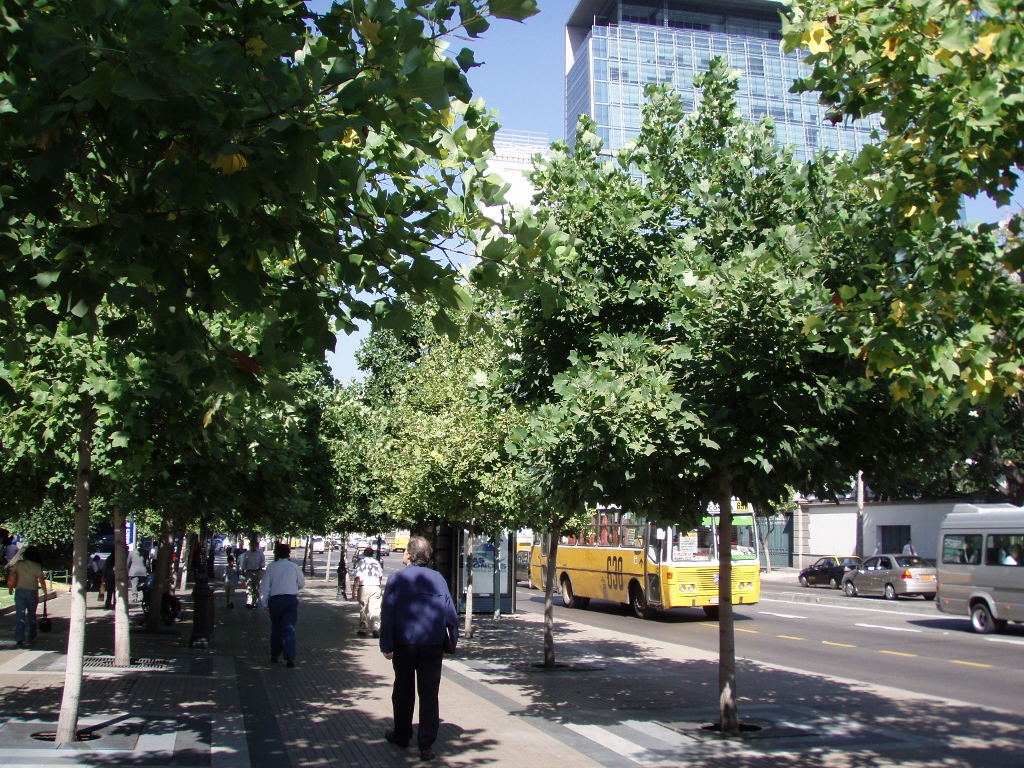 Pavement in the modern part of Santiago
Pavement in the modern part of Santiago
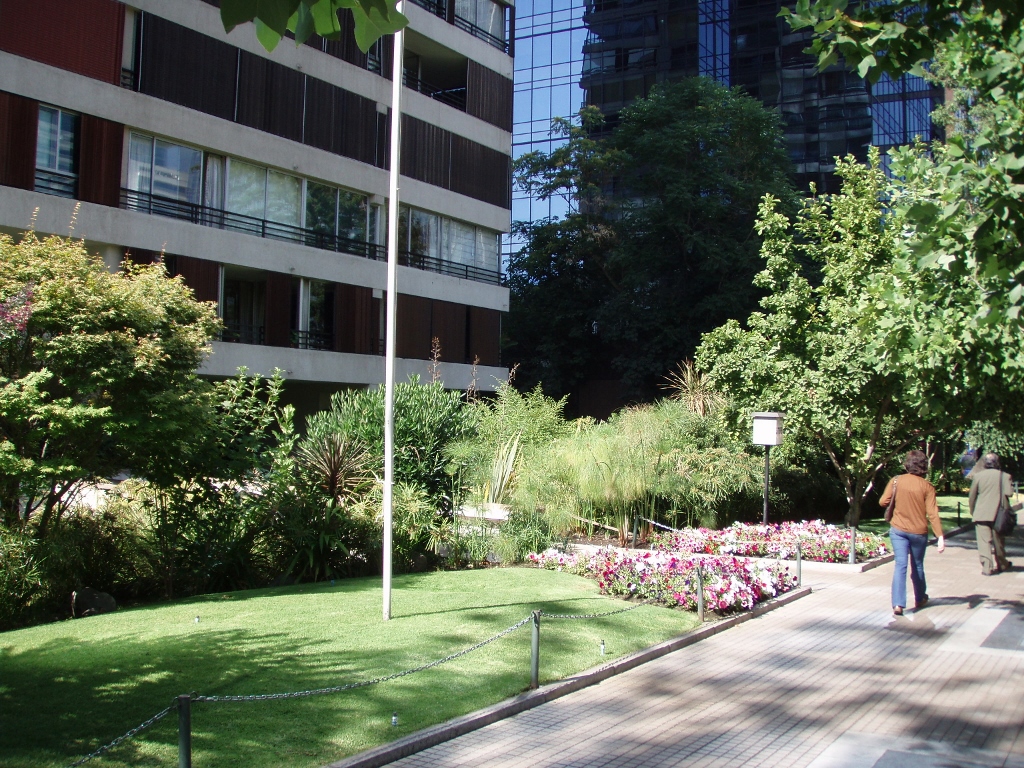 Entrance into a building in the modern part of Santiago
Entrance into a building in the modern part of Santiago
Dragi, Saska’s brother, waited for us in front of their building and our meeting was immediately as if we had known one another for years. We went up to the flat where Sneza and I changed (we came from winter) and refreshed ourselves, and then we all sat down to have a coffee with a lot of chatting.
Then it was the time to eat, so we went to have lunch at a restaurant owned by a Serb. There we were joined by Goran, a Macedonian-Serb from Kumanovo, who had done his post-graduate studies with Saska here and he had also decided to stay and live in Santiago. It was all great fun and I enjoyed it immensely. At some point, Goran had to go back to work and the three of us went for a coffee again. As we arrived at a cafe, a guy got up and said in Serbian: “Let us greet the Serbian way” (this means kissing on cheeks three times). This was also a person from Serbia and he was the owner of the cafe. Just as we sat down, another guy came and we also kissed – this was the owner’s younger brother. What I want to say is that already in the first few hours of our stay we felt completely at home in Santiago and we already had a bunch of friends and acquaintances. In addition, all of these encounters and conversations were joyful and fun. Still, I was getting a bit tired, so I appreciated it when we finally moved.
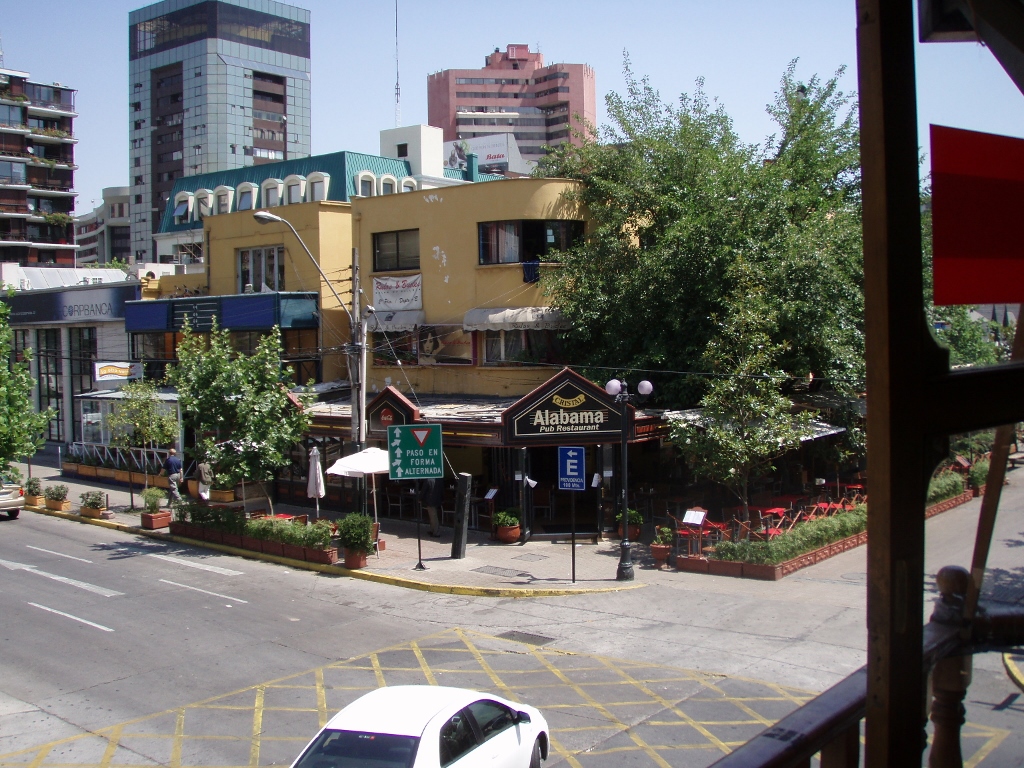 View at the street from the restaurant in which we had our lunch on the first day
View at the street from the restaurant in which we had our lunch on the first day
Later, Saska and Mare came back from work and there were new joyful encounters, getting to know one another, as well as having fun together. And yet, the day would not be complete if we didn’t go out in the evening to have a drink at some bar where we had Goran joining us again, so there was even more good time and laughter. As I truly enjoyed it, I really appreciated the fact that I had had some sleep the night before, as otherwise I wouldn’t be able to go through the evening.
At some point, the evening eventually came to its end and I could go to bed and get some rest, as the sightseeing part of our trip started already the next morning. It entailed a visit to the centre of Santiago.
After getting up, having coffee and breakfast, we went to the centre of the city where we came across very lively atmosphere with some great musicians in the street. Although we were still a little tired from the journey, we couldn’t help swaying in the rhythm of the music. In addition, the weather was ideal – sunny and pleasantly warm. We went along the pedestrian street until we reached the main square, Plaza de Armas.
Like in many other places around the city, we saw numerous palm trees at the main square. This is not strange or unusual, for such is the climate in Santiago. Roughly speaking, Santiago is at similar latitude in the southern hemisphere as Los Angeles or north Africa are in the northern hemisphere.
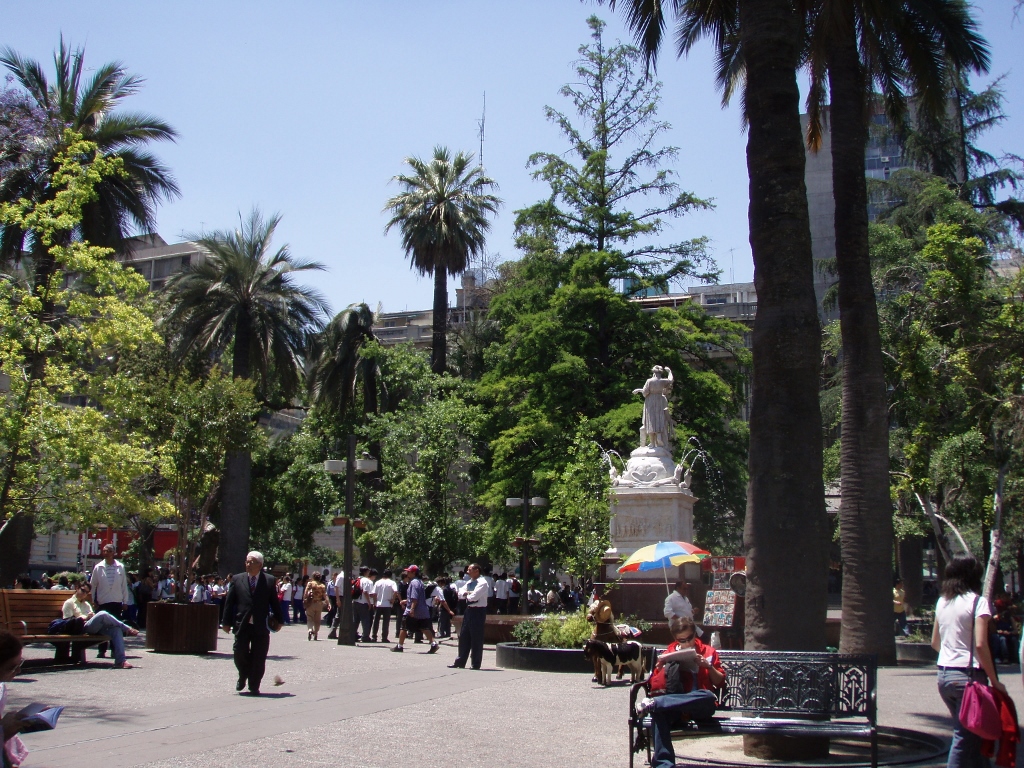 Plaza de Armas
Plaza de Armas
What is unusual is that from some parts of Santiago one may see peaks of the Andes covered by snow. Already at some 100 kilometres from the city it is possible to reach skiing slopes that have a very long season. The peaks reach the heights from 2000 m to well over 6000 m, but these highest are located along the also near border with Argentina.
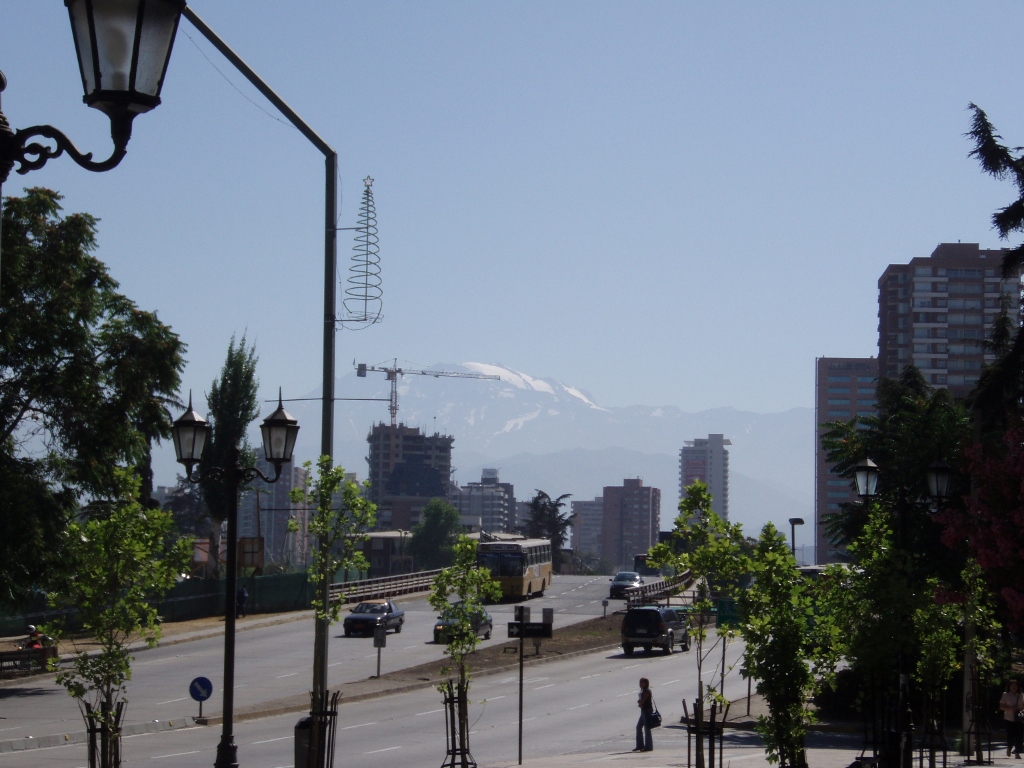 Santiago and the nearby Andes
Santiago and the nearby Andes
Although it was end of November, we did find it a bit odd that in all this sunshine and with people in light clothes, there was an artificial tree being prepared for the celebration of Christmas. But, this is so in the southern hemisphere and in the tropics.
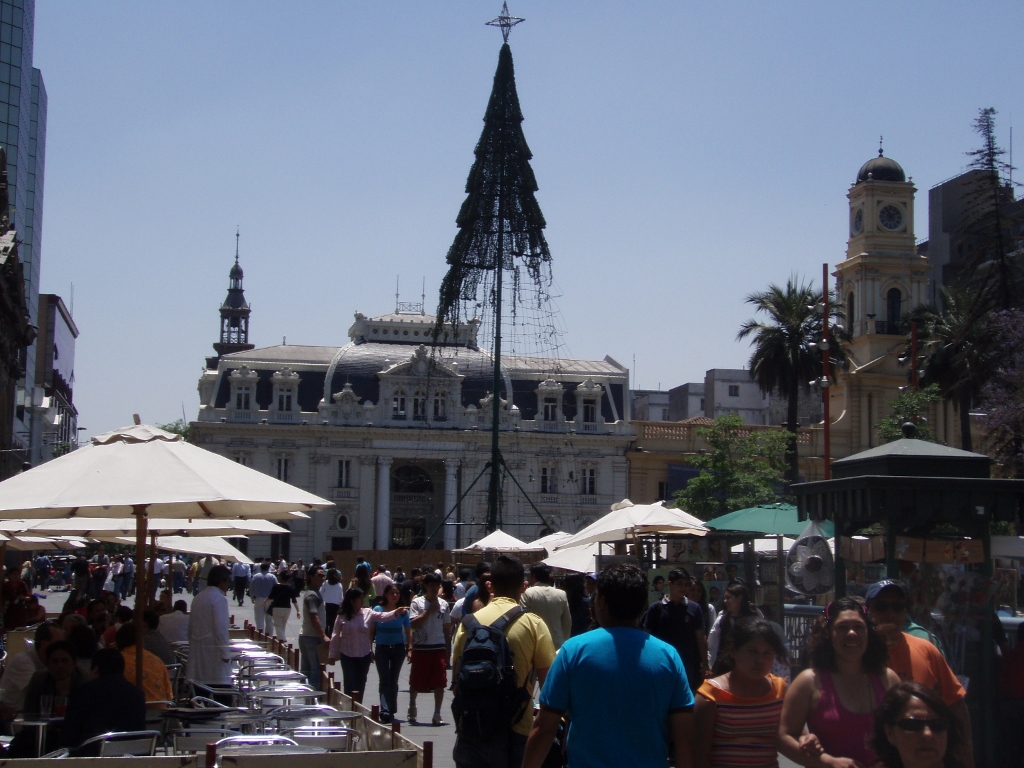 Plaza de Armas: behind the Christmas tree in making, there is the building of the Main Post Office
Plaza de Armas: behind the Christmas tree in making, there is the building of the Main Post Office
The main square is surrounded by different important buildings. One of them is the building of the Main Post Office erected in 1882 on the spot where there used to be the first house in Santiago built by Pedro de Valdivia who founded the city in 1541. There is also the Metropolitan Cathedral which we visited on this occasion.
The centre of Santiago is additionally attractive because one can continuously see interesting combinations of the old and the new, primarily in architecture.
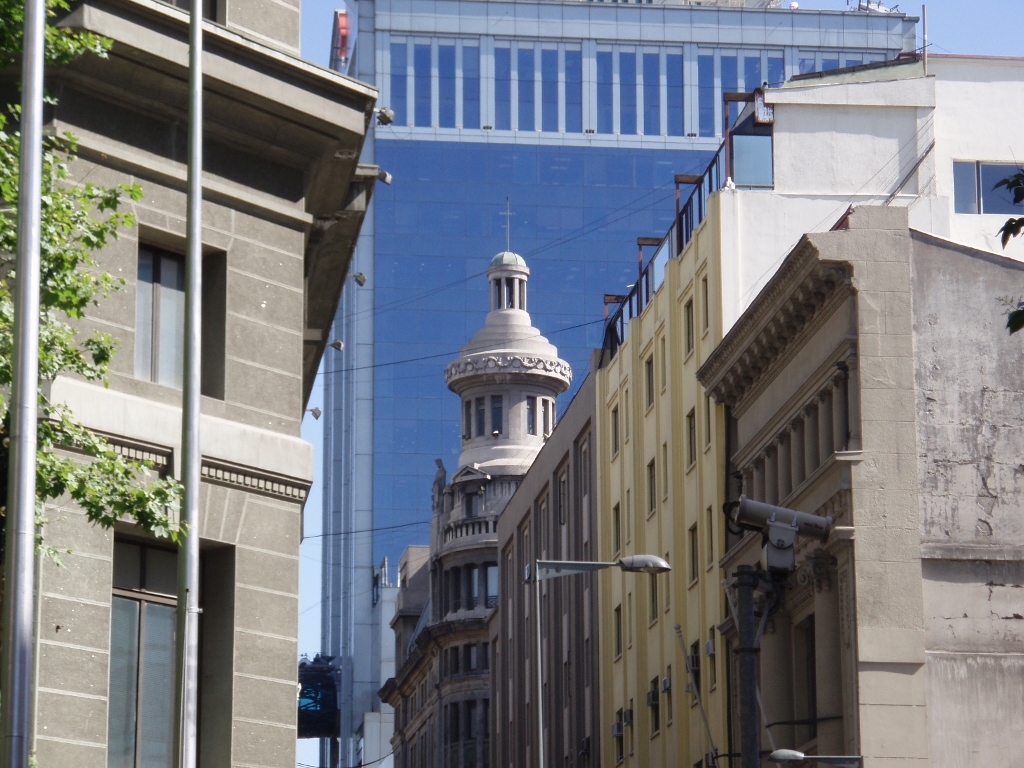 Santiago, a detail from the centre of the city
Santiago, a detail from the centre of the city
Following our visit to the main square, we went to the nearby Museum of Pre-Columbian Art (Museo Chileno de Arte Precolombino) for we wanted to see what we may expect to find in Chile as far as this aspect was concerned. The museum is situated at the former Royal Customs Palace (Palacio de la Real Aduana). I found it particularly interesting to see a large map of Latin America with the territorial distribution of different tribes and kingdoms. A remarkable fact is that the Mapuche tribe, whose members continue to live on the territory of Chile, is the only one which the Spaniards never managed to conquer. Until the second half of the 19th century, the Mapuche had their independent state and then they were occupied by Chile.
When we finished with the visit to the museum, we walked beside the Courts of Justice Palace (Palacio de los Tribunales de Justicia) where in addition to the Supreme Court of Chile there are also several other courts. Right across the street, there is the building of the Former National Congress Building. During the reign of Pinochet, the National Congress was moved to Valparaiso and for a while this building housed the Ministry of Foreign Affairs.
Still, when talking about politics and the government, I think that in the collective memory of the world Chile is mostly linked to the events which saw their infamous beginning on 11 September 1973. Before then, in 1970 Salvador Allende was the first “Marxist” in the world to be elected for a president of a state in free democratic (!) elections. Over time, there were numerous disagreements and political confrontations, and then in September 1973 there was a military coup in order for the President of the state to be forcefully removed from power. General Pinochet, who led the coup d’etat, indeed became so very fond of his own power, so he remained undemocratically in this position until 1990.
Well, in connection with these events, our walk took Sneza and I to Plaza de la Constitucion where there is the Presidential Palace (Palacio de la Moneda). At the time of the 1973 coup, President Allende barricaded himself in the Palace and from there he addressed the public by radio for the last time. During this broadcast, it was possible to hear explosions since the army bombed the building. The official version was that after the broadcast he committed suicide and that he was found dead, but a large number of people doubted this version for years. In 2011, at the order of a court, there was an independent investigation that confirmed that Allende did kill himself, as he obviously did not want to be caught alive by his enemies.
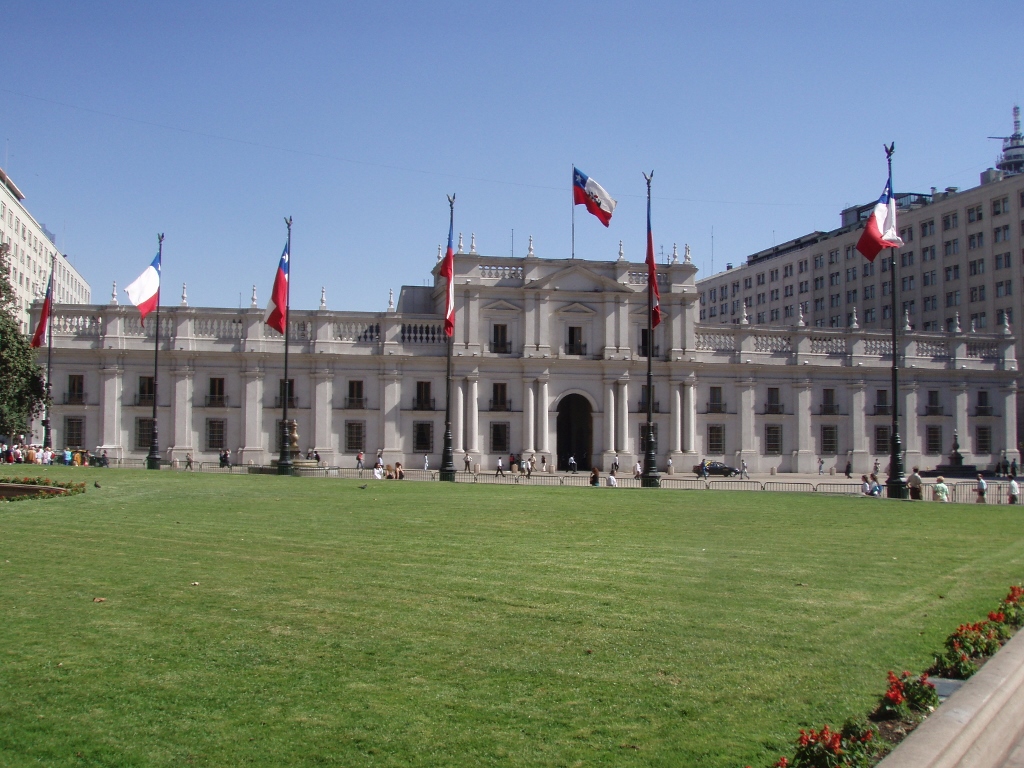 Plaza de la Constitucion and Palacio de la Moneda
Plaza de la Constitucion and Palacio de la Moneda
The building was heavily destroyed by the bombing, but it was later reconstructed. Nowadays, there are some offices of the President, although no presidents actually work there. Originally, La Moneda, as this building is called for short, used to be the colonial mint.
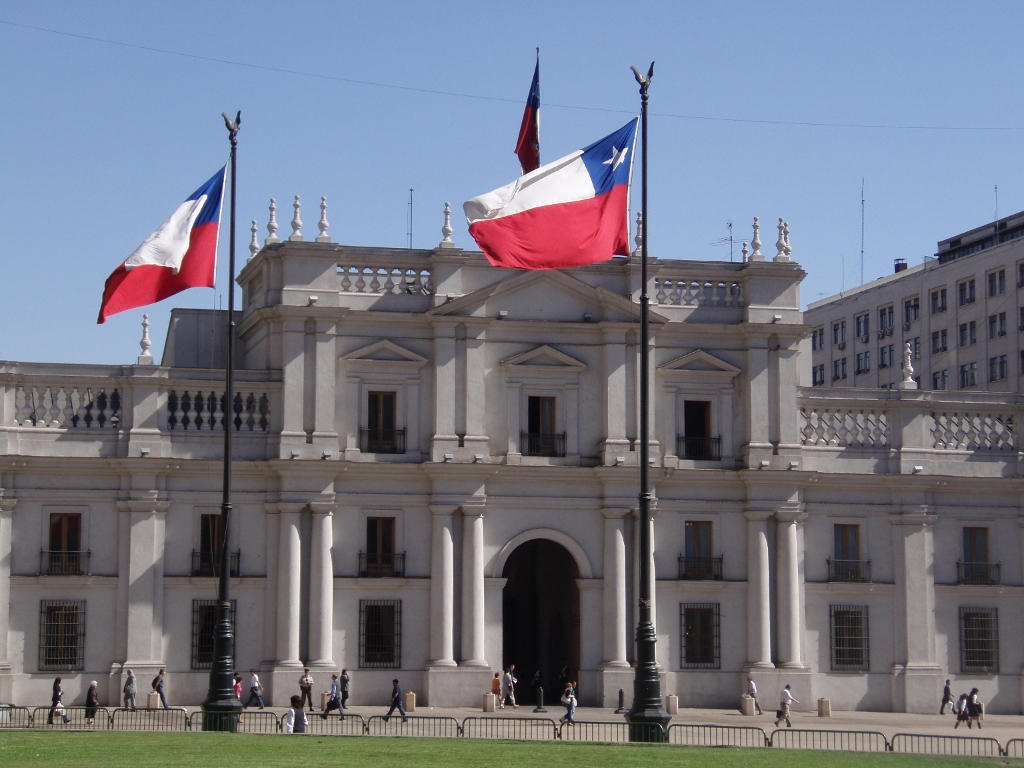 La Moneda, a detail
La Moneda, a detail
At the perimeter of the Plaza de la Constitution, there is a monument to President Allende (1908-1973). The monument also bears words which he said in his last address to the nation: “I have faith in Chile and its destiny” (”Tengo fe en Chile y su destino”).
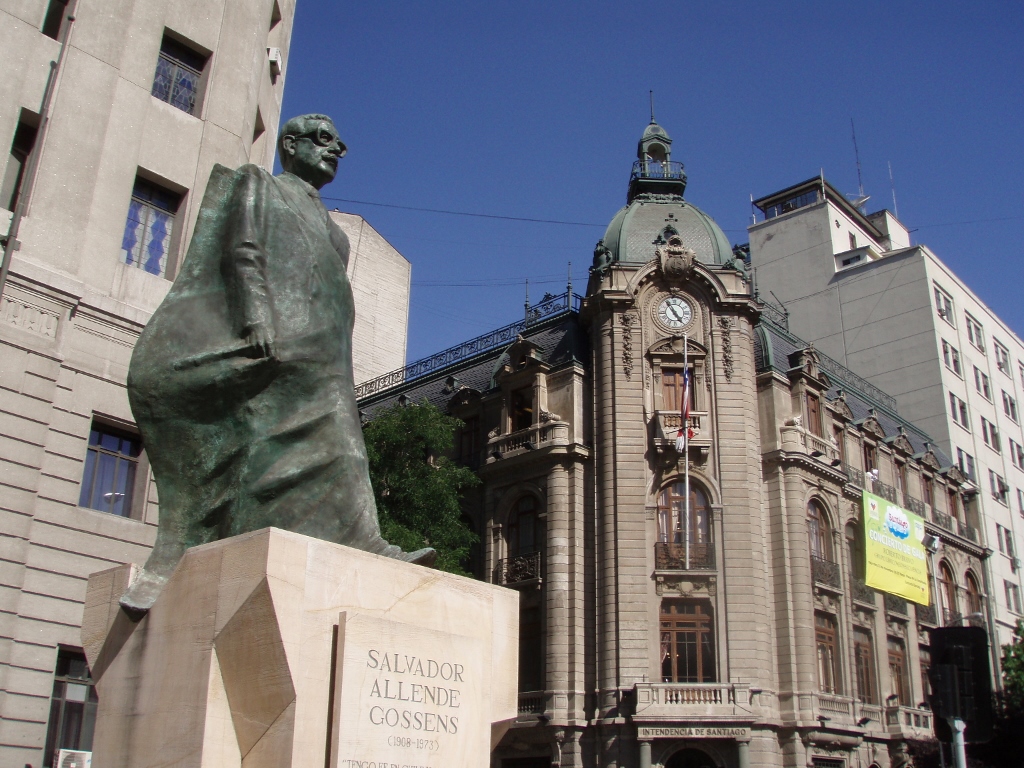 Monument to Salvador Allende
Monument to Salvador Allende
In front of the back side of La Moneda there is a square that used to be called Plaza de la Libertad and nowadays it is called Plaza de la Ciudadania. There used to be the Altar de la Patria (Altar to the Homeland) in which Pinochet had the remains of the liberator of Chile, General Bernardo O’Higgins, placed. After the reconstruction of the square and a temporary removal, the remains of the General were brought back to rest in peace in the underground crypt of the Liberator which is located at this square.
Regardless of these volatile historic events, Chile is exceptionally economically stable and successful country. At the time we were there, we were told that the country had not only paid out all of its foreign debt, but also that it had a huge foreign trade SURPLUS! We were also told that Chile was in the penultimate position in the world as far as corruption was concerned and only Finland had less corruption at the time. This seemed all quite visible in the streets of Santiago where complete public transportation pool was in the phase of being replaced, while the entire city infrastructure was impressive.
After several hours spent facing serious history in different forms, we continued with a lighter version and that was a visit to the nearby hillock with a park called cerro Santa Lucia. This is a very nice place to have a break which in addition to greenery also has a lot of fountains with a fine viewpoint on its top rendering great vistas of the Andes as well as Santiago itself. This elevation does not seem much from the street, but when you start going up the stairs, just when you think that the top is close, it turns out there is more. Still, it is certainly worthwhile coming up here, for this is an excellent place from where one may get a good idea of the city and its distribution.
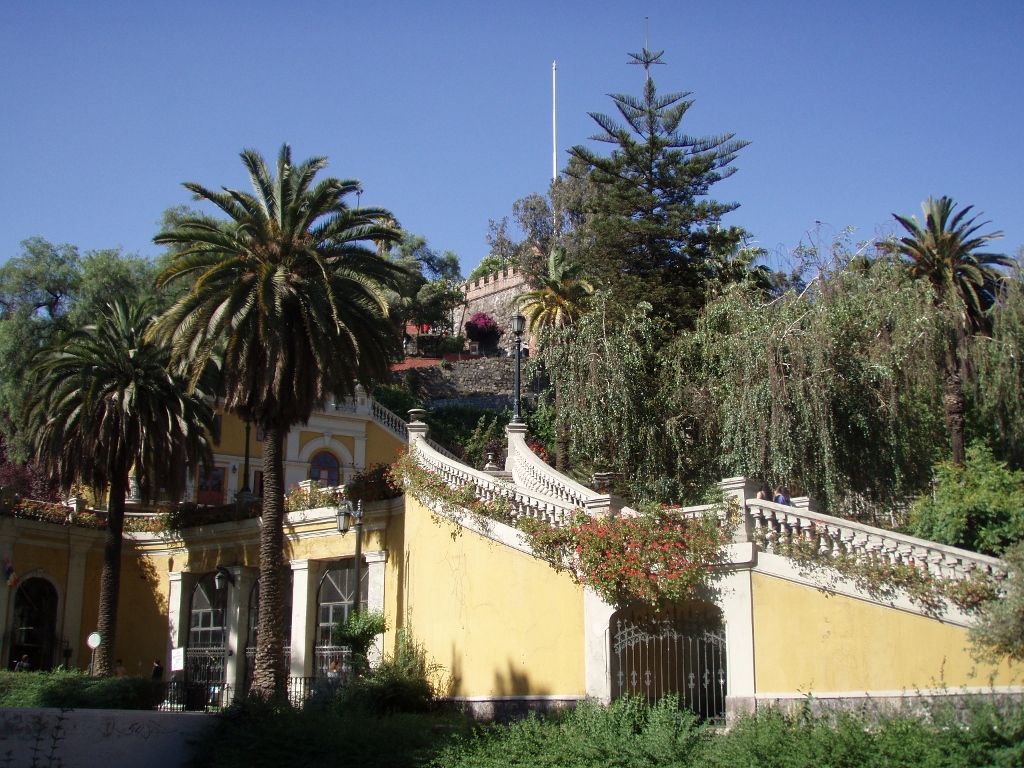 Cerro Santa Lucia
Cerro Santa Lucia
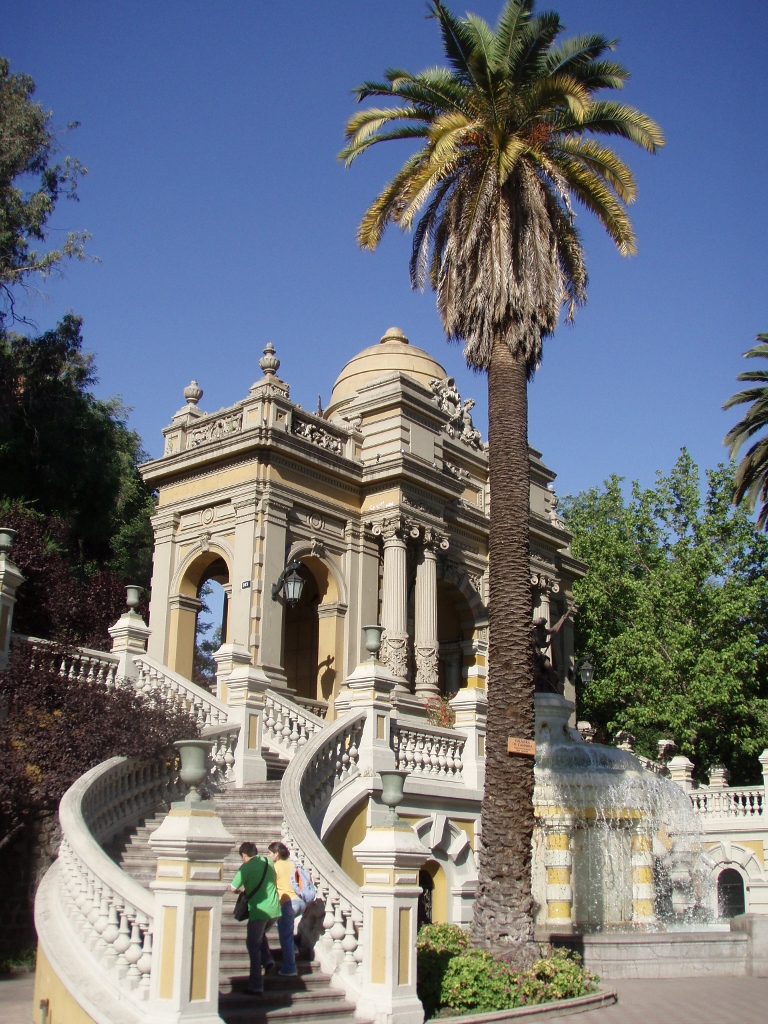 Cerro Santa Lucia, a fountain
Cerro Santa Lucia, a fountain
After a nice break in the shadow of trees, we went back to the asphalt and walked along one of the main avenues and that is Alameda. Thus we came to a building that has a shape of a mobile phone. At least this is what mobile phones used to look like some twenty years ago. I wonder what happens when there is a new model. You make a new building?
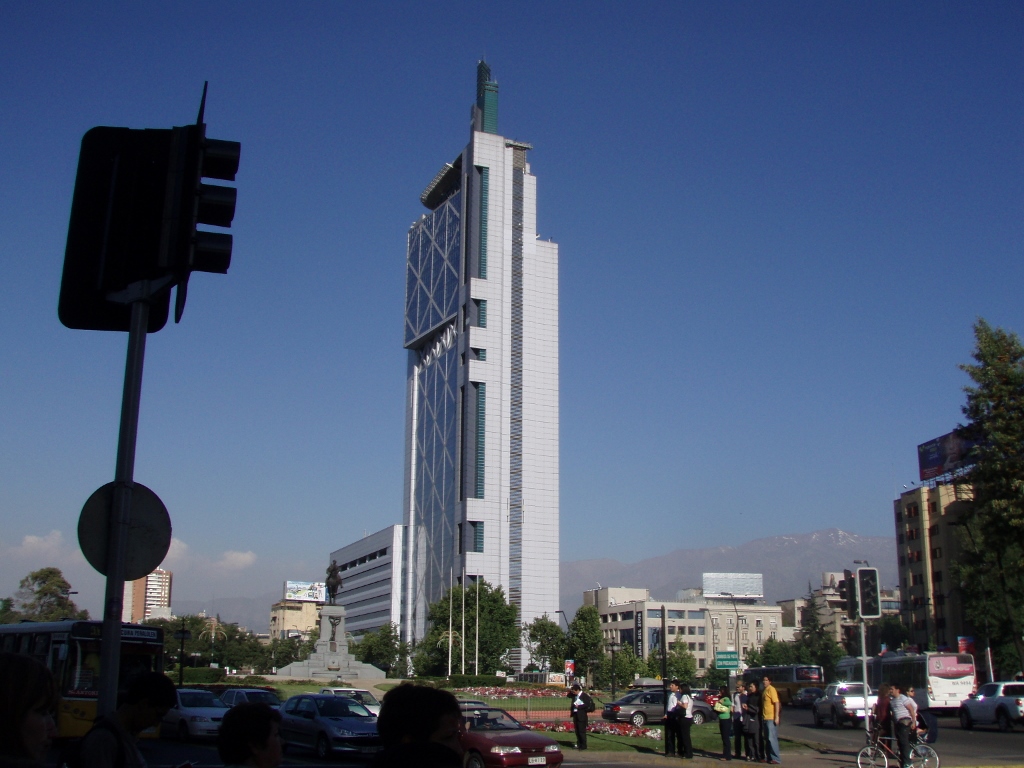 Santiago, a detail
Santiago, a detail